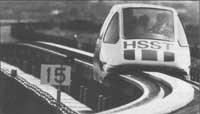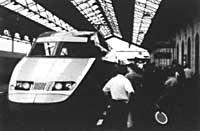Magleva in litigation
1989/10/01 Elhuyar Zientzia Iturria: Elhuyar aldizkaria
German plans to build a magnetic levitation train are shaken. The Minister of Transport, Fiedrich Zimmermann, has expressed her intention not to spend another frame on this train called “Transrapid”. To date the Minister has invested 12.6 billion German frameworks. To finance the next phase, 3,000 million frameworks are needed.

Magleva.
Transrapid's initial plans were to unite Hanburg and Hanober. Between these two cities there are 155 km and now it takes 80 minutes to travel. With transrapid it is expected to reduce time to 30-40 minutes. However, according to those responsible for the project, for the Transrapid to be profitable it is necessary to join two distant cities, such as the 1,025 km railway that would connect Hanburg and Münch. The cost of this type of railway can range from 30.000 million to 40.000 billion, and it would take 15 years to finish the job.
In the 1960s it was thought that magnetic levitation trains (maggefs) were the best way to connect the big European cities, but the good results obtained in France through the TGV, that is, the conventional railway, have put into question this vision.
Germany and Japan are the countries that are working on the technology of the maglevs and Germany is believed to be between 3 and 4 years earlier. This advantage can be relevant when the potential market of the US is expanded.

Gai honi buruzko eduki gehiago
Elhuyarrek garatutako teknologia




